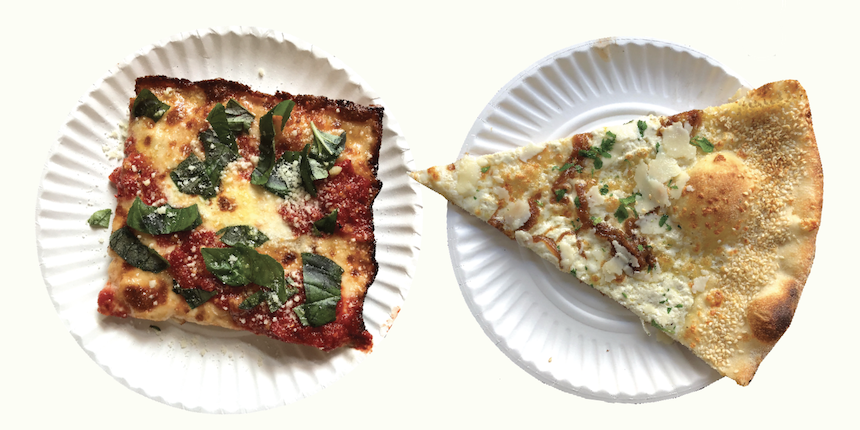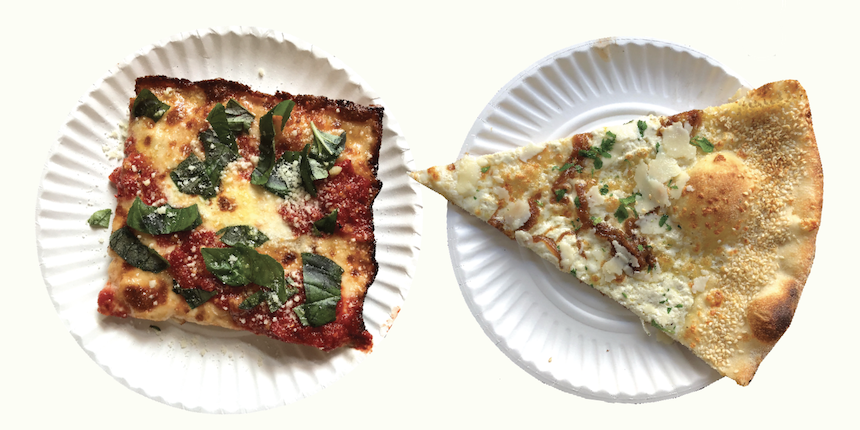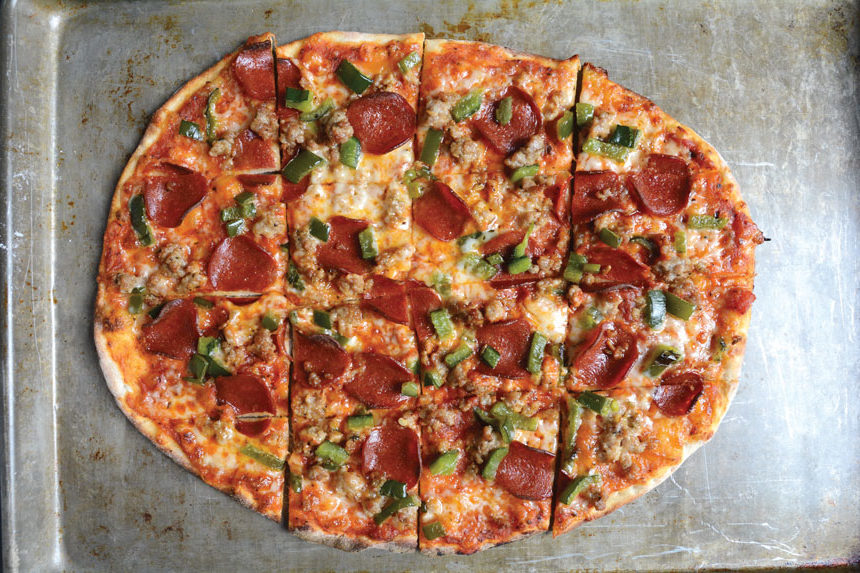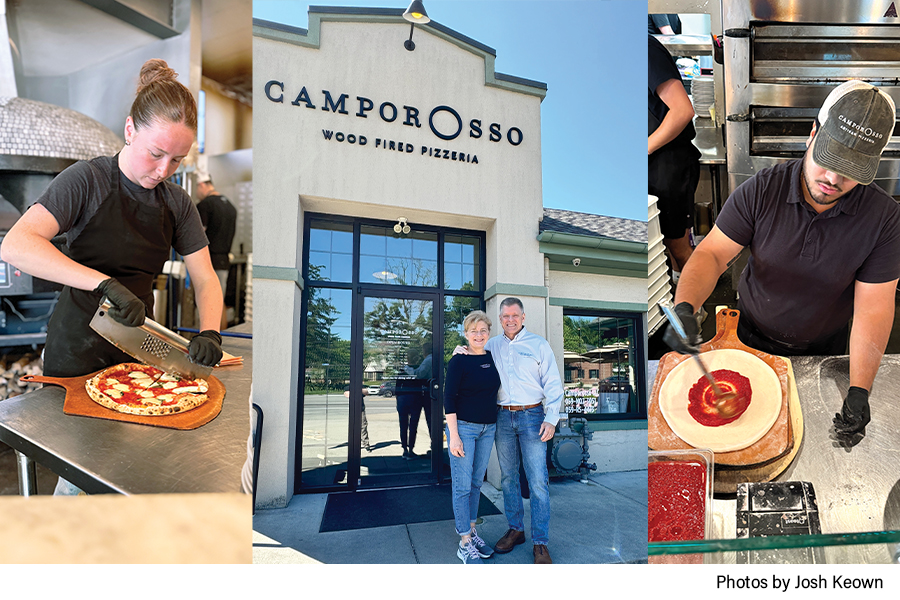A Pizza Today Reader asks: I add old dough to new dough but have noticed it’s more acidic. When is it too much and what makes it ‘too much’? What does PH do to dough?
You asked so you shall receive! Let’s talk about pH or acidity in dough. Now, I don’t want you readers to think I know every little thing about the molecular chemistry that makes up fermentation. The one thing I am most certain about is that the more I learn about dough and fermentation the less I really know. That to me is the most fun part about learning in that it never stops.
This is meant to be more of an introduction to pH. As with anything dough related there are a bunch of factors that go into the change and evolution of flavor and performance and as soon as you change one thing you change everything. At the end of this you will find a few names and resources that I use when I find myself in a pickle. These are the people and places I go to when I am trying to figure out nuance as more brains with more experience are always better than one.
In my restaurant my dough uses instant or dry active yeast so pH and acidity is on my mind in relation to flavor, but I’m not as preoccupied with it is as when I am making sourdough. The techniques and manipulations I use to coax flavor out of my dough are the same but are even more necessary when it comes to controlling a sourdough and the final product.
What is pH and how do I know what my dough is doing?
PH is the acronym used to measure acidity. The acidity, especially in sourdough, is where the sour comes from. There is a scale or range that is used to determine how acidic something is or the opposite known as alkaline. You hear the word alkaline a lot nowadays in regards to bottled water. The pH scale runs from 0 — the most acidic to 14 — which is alkaline. Right smack in the middle at 7 is neutral. It might seem counterintuitive but the lower the number the more acidic something is. To test the pH of your dough or preferment you can purchase a meter easily on Amazon or other retail stores that look, and are, as compact as a kitchen thermometer. Just like your handy kitchen thermometer, pH meters need to be calibrated but there are usually instructions on how to do this and how to care for your meter inside the box when you purchase one. To use a pH meter, you’ll want to insert the probe end into your solution, dough or preferment, wait a few seconds and the meter will give you a reading. Usually, these readings contain decimals as pH is not measured in solid absolutes but can be measured to a decimal point. The sweet spot for sourdough I’ve found to be around a level of 4 to 5.
Where does acidity come from?
The flavors and aromas we are trying to achieve are actually byproducts of fermentation between yeast and bacteria within dough or preferments. With a sourdough starter this would just be from the flour, water and yeasts that naturally live in your environment. The main strain of yeast we care about most is called Saccharomyces Cerevisiae, and the bacteria we are most concerned with are Lactobacillus (a.k.a. Lactic Acid) and Acetobacter (a.k.a. Acetic acid). These two acids are crucial when learning at what time has your preferment or dough gone past the point of no return, becoming too acidic or not acidic enough for maximum flavor and performance.
Now, the growth of a sourdough in a general sense is like the growth and expansion of a city over the course of decades. The original settlers, yeast and bacteria, move in and fight for dominance and survival. Over the course of time and generations (feedings), new flour and new bacteria move in. They either blend with the older generations becoming something new and evolved or they don’t survive. This happens over the course of multiple feedings with a sourdough and what was created in the beginning is always a newer, slightly different version of itself after every feeding. Yeasts and lactic acid go hand in hand because they can survive each other’s defense mechanisms. Both eat simple sugars, but the byproduct they excrete are different. As lactobacillus eats, they give off acid. As yeast eats, it gives off ethanol. Lactobacillus has a high tolerance for alcohol, so they’re like two roomies cohabitating like peas in a pod. But, if you’ve ever made sourdough and forgotten about it then you’ve probably come in contact with a product that is overly sour or not sour enough. There is a balance that is needed.
Role of time, temperature and hydration in dough production
Time, temperature and hydration play into finding the balance of how much sour or pH content you are looking for. When it comes to feeding a starter, there is such a thing as too much. Over feeding of a starter will result in overwhelming it and it can either die or dilute it to a point where it doesn’t have much flavor. Over feeding lowers acidity but feeding less often will increase acidity.
Temperature plays into that as yeasts are more active in warm environments, so finding a warm but not too warm place is crucial. There are incubators available that can help regulate temperature that will fit on a counter or try and find that sweet spot in your kitchen. Too warm and you increase leavening because the yeasts are active, but acid production is low. The reverse is true when flipped. Colder temps slow down leavening but increase acid production.
What can you do if you’ve reached a point of too sour? Speed up the feeding schedule a bit by a few hours over the course of 1-2 feedings and see if that does the trick. Too much alcohol production results in forgetting about a feeding time or maybe going on vacation and forgetting to leave your starter in good hands. When this happens the other bacteria, Acetbacter, finds its time to shine. This bacterium moves in feeding on the surplus of alcohol giving off a different kind of acid which is more astringent like vinegar. This is normally when people find their sourdoughs to be too sour.
Hydration will change which acid takes charge. With higher hydration you tend to see lower quantities of lactic acid production, a more gentle sour flavor, but an increase in leavening power. Lowering the hydration, on the other hand, increases acetic acid production, giving off a stronger more vinegar like sour flavor but decreases the leavening power.
Dough Resources
These are just a few of the resources I use but don’t be afraid to ask or search where these expert go to learn too!
Audrey Sherman- Audrey Jane’s Pizza Garage, Boulder Colorado IG: audreyjanespizza
Will Grant- That’s a Some About Pizza, Sourdough Willy’s, Seattle and Bainbridge, Washington IG: sourdoughwillyspizzeria
John Gutekanst- Avalanche Pizza, Athens, Ohio IG:jgutekanst
Leo Spizziri- Chicago, Illinois IG:askchefleo
Karl De Smedt: IG: sourdough_librarian
Books by Modernist Cuisine: Modernist Bread
Bread Science by Emily Buehler
The Bread Bakers Guild of America- website: https://www.bbga.org/
Podcast: The sourdough podcast by Michael Hilburn
Laura Meyer is the owner of Pizzeria da Laura in Berkeley, CA.
















